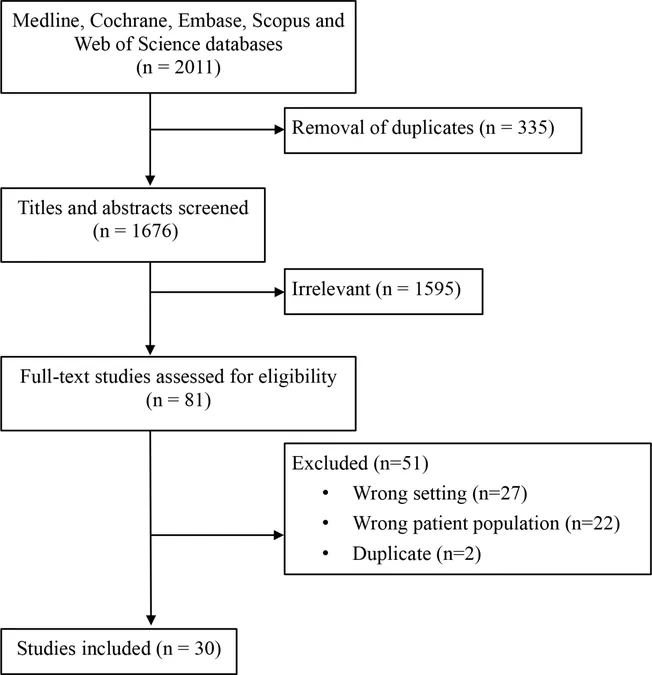
Study Reveals: Methadone Outperforms Buprenorphine in Retaining Opioid Use Disorder Patients!
2024-11-22
Author: Charlotte
A Look at This Life-Saving Research
Published in the prestigious Journal of the American Medical Association, this study meticulously examined the outcomes of opioid agonist treatment (OAT) over a substantial 10-year period. The researchers aimed to evaluate both the risk of treatment discontinuation and mortality rates among patients. Dr. Bohdan Nosyk, a key contributor to the study and professor at Simon Fraser University, emphasized the urgency of continuing to assess optimal treatment strategies in the face of an escalating opioid crisis, exacerbated by the proliferation of fentanyl in the drug supply.
“Reducing the risk of treatment discontinuation saves lives,” Dr. Nosyk stated. “It’s critical that we leverage high-quality health administrative data to inform our understanding of how various treatment options are performing, especially as the nature of the drug supply evolves.”
Study Selected Thousands for Analysis
This comprehensive analysis included nearly 31,000 BC residents who received either methadone or buprenorphine/naloxone between January 1, 2010, and March 17, 2020. The majority, over 61%, were prescribed methadone. Results showed that patients on methadone were less likely to drop out of treatment, with the overall mortality risk remaining low for both medications used.
Notably, these findings were consistent across diverse patient demographics, including young adults under 24, individuals with severe mental health issues, and those suffering from chronic pain. “While these medications are effective, their benefits hinge on patient retention in treatment,” remarked Dr. Paxton Bach, a clinical assistant professor at the University of British Columbia. “Given the observed decline in retention rates over recent years, it’s imperative we refine our clinical practices based on solid evidence.”
The Grave Consequences of Discontinuation
Earlier research highlights a chilling statistic: the mortality risk for individuals who discontinue OAT more than doubles compared to those who remain in treatment. This underlines the critical importance of maintaining patient engagement in therapeutic programs aimed at combating OUD.
Future Directions in Treatment and Research
The researchers advocate for a patient-centered approach when it comes to choosing medication options, emphasizing the need for shared decision-making. Exploring innovative treatment methodologies, including co-prescription with hydromorphone, is seen as an essential avenue for research. Addressing barriers to treatment retention, such as the requirements for urine drug screenings and daily witnessed doses, is also vital.
The Alarming Context of Fentanyl in BC
Since the emergence of fentanyl in BC’s unregulated drug market in 2012, deaths from drug overdoses have skyrocketed. Fentanyl has been implicated in over 82% of these tragic fatalities since 2017. According to the BC Coroners Service, an average of six individuals dies each day due to unregulated drugs—a stark reminder of the urgent need for effective treatment strategies.
Both buprenorphine/naloxone and methadone are accessible in specialized drug treatment facilities and through office-based settings across BC. This study utilized anonymized health administrative data, protecting patient confidentiality while assessing the efficacy of OAT.
Stay tuned as further research emerges, potentially shaping the future of opioid treatment and saving countless lives in the process.









 Brasil (PT)
Brasil (PT)
 Canada (EN)
Canada (EN)
 Chile (ES)
Chile (ES)
 España (ES)
España (ES)
 France (FR)
France (FR)
 Hong Kong (EN)
Hong Kong (EN)
 Italia (IT)
Italia (IT)
 日本 (JA)
日本 (JA)
 Magyarország (HU)
Magyarország (HU)
 Norge (NO)
Norge (NO)
 Polska (PL)
Polska (PL)
 Schweiz (DE)
Schweiz (DE)
 Singapore (EN)
Singapore (EN)
 Sverige (SV)
Sverige (SV)
 Suomi (FI)
Suomi (FI)
 Türkiye (TR)
Türkiye (TR)